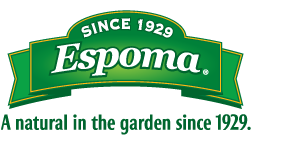Aphids, mealybugs, scales, and whiteflies have needle-like mouthparts to pierce plant tissues and feed on plant sap. Literally sucking the life out of your plant. It is common for foliage infested with these insects to be covered with black sooty mold. The reason for this is because they secrete a sugary product known as honeydew. Sooty mold indicates pests are present. Ants are also a good indicator of the presence of insects. They feed on honeydew, and often care for and protect the insects that produce it.
I did a lecture at the Carolina Yard Experience on Integrated Pest Management, also known as "The Good, The Bad, and The Ugly". The gist of my lecture was, Allow the beneficial insects to do their work. Ladybugs and lacewings are common predators that feed on piercing-sucking plant pests. If you don't use a lot of broad-based insecticides these GOOD insects will help control the other BAD insects.
I touched on a few bad insects there and I will do so here.
Aphids:
Aphids may be winged or wingless. They have pear-shaped bodies. They are usually green but may be yellow, black, red or other colors. Aphids attack succulent young leaves, and they typically congregate on the undersides of growth. You will know that you have an aphid problem when you see leaves becoming twisted or distorted, lots of ants and sooty mold. To help control them and give your good bugs a little help, Fertilize and water moderately to avoid excessive new growth. Flush aphids from branch tips with a garden hose. Insecticidal soaps do little damage to aphid enemies. A few aphids should be tolerated because they are a good food source for beneficial insects. Think of it as leaving a little snack for your friends.
Mealybugs:
Mealybugs are small insects that have soft bodies and well-developed legs. Their bodies are covered by a powdery, white, wax coating that may also surround their egg masses. They attack leaves, twigs, and roots. Mealies are usually pretty easy to spot, but if you see white waxy deposits, sooty mold on foliage, and lots of ants there is a good chance you have them. To control them, Horticultural oil and insecticidal soaps may be applied as a spray. Again, these will be less toxic to your beneficial friends. Control can be difficult, however, because mealybugs like to hide in tight, hard-to-reach places and protect themselves with wax deposits.
Whiteflies:
Adults appear as white specks on plants. They deposit lots of eggs on the underside of leaves. Stationary larvae are oval, flat, transparent to greenish in color when they are alive, and dull white when dead. You know you have Whitefly when you brush up against the plant and it looks like an upward bound snowstorm. The top sides of the leaves become pale or spotted. You have lots of Ants and sooty mold. Some whiteflies have developed tolerance to pesticides. Insecticidal soaps and horticultural oils are effective and of course, environmentally friendly. There is another environmentally safe way to control Whitefly, yellow boards smeared with oil will trap many of these insects.
Spider mites:
Spider Mites are tiny, have oval bodies and are about the size of this period. They may be red, yellow, greenish or spotted. Adults spin loose webs on foliage and reproduce rapidly in hot weather. The Injury they do looks like light-colored dots, which gives leaves a dull, gray-green, stippled appearance, fine, loose spider webs and ashy looking residues. You will need a magnifying glass to see these tiny little insects. These guys are difficult to get rid of because mites multiply quickly, they develop pesticide tolerance when the same product is used over and over again. Alternate horticultural oil with insecticidal soap. Use a garden hose to dislodge mites from plants. If you must use a chemical, make sure it is labeled for Spider Mites or arachnids.
As always, make sure you follow label directions!! I can not emphasize this enough, it is the law!
Hopefully, this will give you some idea of what to look for and what to do for them. I didn't get to lecture in front of very many people, but I sure talked to a
Happy Growing!
Darren










Nice blog. I added it to my favorite. I have a few citrus trees growing in my house in an arboretum. I guess one plant I bought had white flies and they multiplied. I tried different insectisides, which one is best or what soap is best to kill them or can I only keep them in check. I also thought about using lady bugs. I used them once in my back yard pond and they did a great job, thanks.
ReplyDeleteMark in Palmdale CA
Mark, When it comes to Whitefly, persistence is key. Follow the label directions to whatever you are using and spray, spray, spray. You will get rid of them. The eggs are what keep hatching, eventually you will win.
DeleteIf you have had luck with Ladybugs, you can also use them. The insecticidal soap will not harm them.